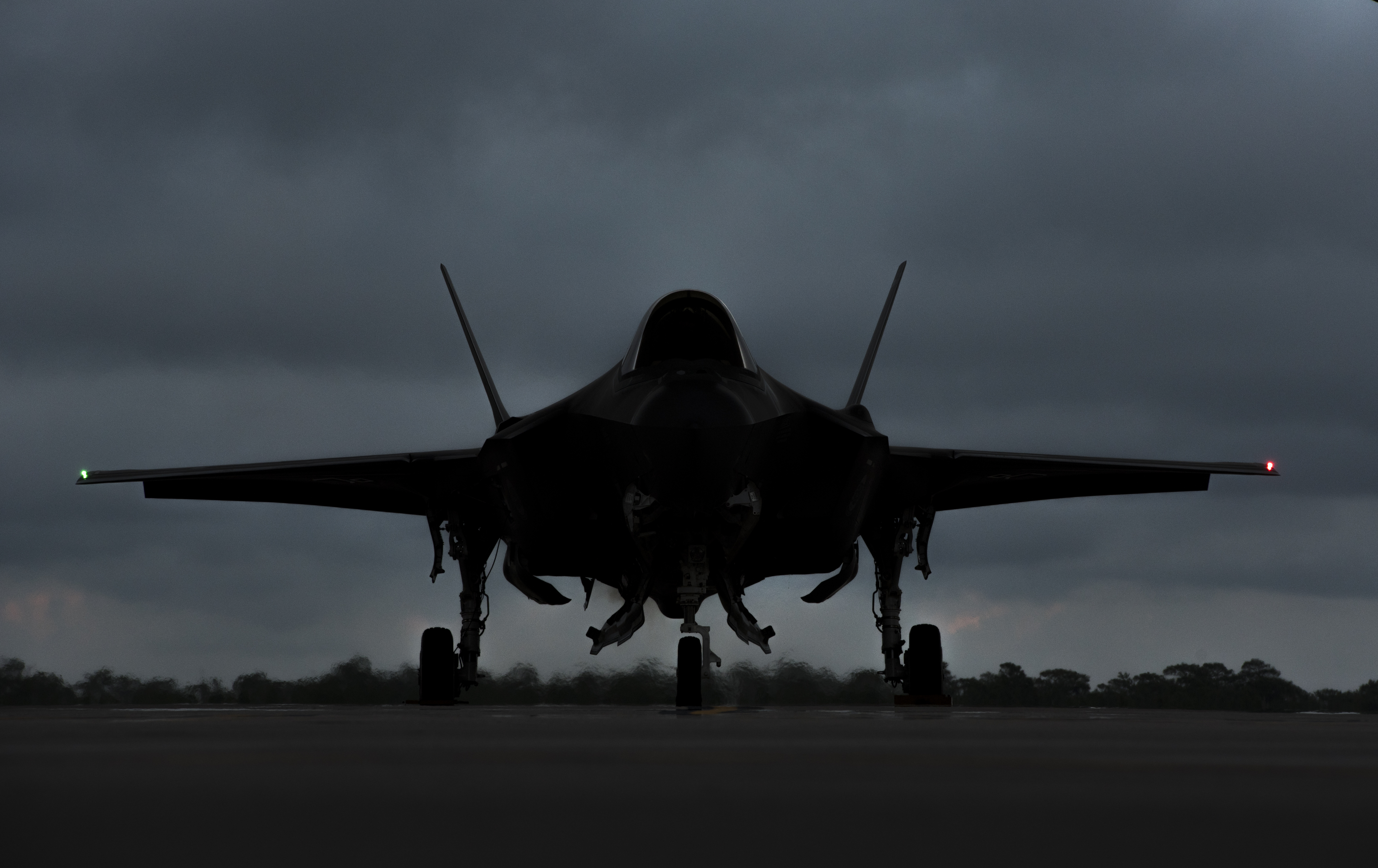
An F-35A Lightning II awaits permission to taxi May 30, 2018, at Eglin Air Force Base, Fla. USAF photo by A1C Emily Smallwood.
The Senate Appropriations Committee on Thursday is expected to take up a $675 billion Fiscal 2019 funding bill, after the defense subcommittee approved the measure on Tuesd?ay.
“This bill sustains US force structure and improves military readiness. It also recommends investments in future technologies needed to defend our nation in an increasingly complex and competitive national security environment,” said SAC Chairman Richard Shelby (R-Ala.), who also chairs the Subcommittee on Defense. “Our military must maintain its technological superiority.”
The legislation, which includes a 2.6 percent pay raise for US troops, includes $607.1 billion in the base budget and $67.9 billion in overseas contingency operations funds. It includes $42.2 billion for military aircraft procurement, including $300 million for USAF’s light attack aircraft program, which it dubs a “high-priority program.” The service has suspended the second phase of its light attack experiment at Holloman AFB, N.M., following a fatal accident last week. Service officials say it’s not yet clear when the experiment will resume. It was originally slated to last through the end of the summer, with a possible contract award soon after.
The funding bill also includes $120 million for advance procurement of USAF F-35A strike fighters, as well as $375 million for USAF’s Advanced Battle Management System, “including additional MQ-9 Reaper unmanned aerial vehicles, support of the battlefield airborne communications node mission, radar and agile communications development, and sustainment of the legacy E-8 JSTARS fleet,” according to a committee press release.
The bill includes $2.8 billion for basic non-medical research—a $529 million increase above the President’s original budget request—and invests heavily in hypersonics, directed energy, missile defense, cybersecurity, and improving test and evaluation infrastructure.
For hypersonics, it includes an additional $929 million “to support and accelerate offensive and defensive hypersonics research and prototyping efforts,” including $300 million for USAF’s hypersonic conventional strike weapon and the air-launched rapid response weapon.
Despite Google’s recent decision to pull out of Project Maven, the bill includes $150 million for the artificial intelligent project, which would help human operators sort through captured drone footage. It also invests an additional $317 million in directed energy programs, including $150 million for USAF programs focused on airbase air defense, precision attack, and aircraft self-protection.
The legislation looks to continue efforts to rebuild the nation’s conventional weapons stockpile, funding $18.5 billion for missile and ammunition programs.
The subcommittee also included an additional $564 million in additional funds for offensive and defensive space capabilities.